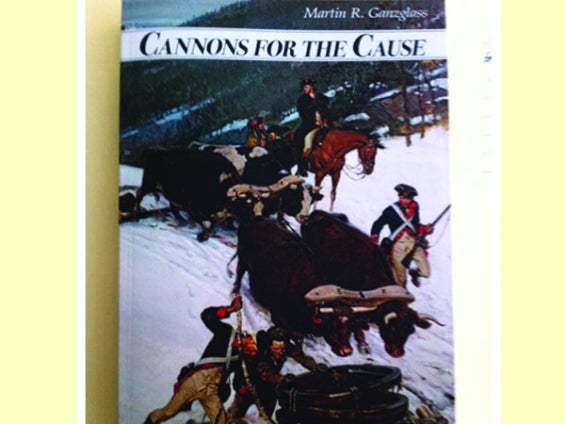Headline News
“Cannons for the Cause”

“Cannons for the Cause,” a novel written by Martin R. Ganzglass, who for 40 years was General Counsel to what is today the Graphic Communications Conference of the Teamsters Union, was recently published by Peace Corps Worldwide and is available from Amazon.
“When I retired a few years ago, I finally had the time to fully engage in my two passions: American history and writing,” Ganzglass said.
Although the story doesn’t have anything to do with the Teamsters Union, it’s about teamsters, the men who drove horse and ox drawn wagons and sleds, delivering guns, ammunition, food and other essential supplies during the Revolutionary War.
“Cannons for the Cause” is the story of 16-year-old Will Stoner and his father, together with other New York and Massachusetts teamsters, who are hired by Colonel Henry Knox to haul 59 cannons, totaling 119,000 pounds on wagons and sleds 300 miles from Ft. Ticonderoga, N.Y. to Cambridge, Mass., across the frozen Hudson and over the Berkshires, in the brutal winter of 1775-1776.
“While I did not write my novel with the intention of showing the role teamsters played in the early years of the Revolutionary War, ‘Cannons for the Cause’ does accurately describe the vital and heroic effort of teamsters in accomplishing Knox’s important mission and helping to drive the British from Boston,” Ganzglass said.
Unlike many historical novels that take substantial liberties with established facts, “Cannons for the Cause” is carefully researched. The end notes include background information about the events described, different interpretations by prominent historians and quotes from the historical figures’ own correspondence.
The second book in the series, “Tories and Patriots,” carries the characters forward in 1776 through the battles of Brooklyn and Harlem Heights and the long retreat through New Jersey. It will be published in early 2015. A third, “Blood Upon the Snow,” is in the works.
“I believe the story of our country’s struggle for independence comes alive in good historical fiction,” Ganzglass said. “I am passionate about history and convinced that thoroughly researched, well-written historical fiction will attract readers who otherwise would not read straight history books.”
During his research, Ganzglass found that while there were no unions in revolutionary America, there were printers, typesetters and bookbinders, some of the crafts which later united to become the Graphic Communications Conference. “The IBT’s logo of horse heads framing a wagon wheel recognizes the critical contribution of teamsters in early America who delivered everything needed by society, both in peace and war,” Ganzglass said.
Before representing labor unions, Ganzglass served in Somalia in the Peace Corps as Legal Advisor to the Somali National Police Force, which influenced his other writing. He drew upon his Peace Corps experiences in writing his first published novel, “The Orange Tree,” followed by “Somalia-Short Fiction,” both published by Peace Corps Writers and both available from Amazon.
“The saying that truth is stranger than fiction is especially appropriate with respect to history,” Ganzglass said. “In the course of my research I discovered at least one integrated Regiment in the Continental Army in 1775 and read about a race riot at General Washington’s headquarters in Cambridge. There are African-American characters in ‘Cannons for the Cause,’ not because it is politically correct today but because it is historically accurate. We need to learn more about our own history and I will continue to write good historical fiction to promote such knowledge.”